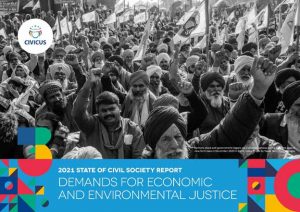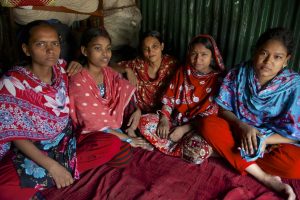Progress in attaining equity is uneven in Bangladesh despite impressive trends observed in reaching gender parity in education, school enrollment, and youth literacy, a study revealed on Wednesday.Disparities exist in effective coverage of basic social services by geographic regions, rural-urban, gender, wealth, ethnicity, and other dimensions for children and women.
The findings in ‘Child Equity Atlas: Pockets of Social Deprivation’ reinforce the need for geographic targeting and collaborative efforts among different sectors and development partners to reach out to the most deprived communities through greater policy and budgetary support.
The finding of the report was disseminated today (Wednesday) in presence of Planning Minister Air Vice Marshal (rtd) AK Khandker, State Minister for Women and Children Affairs Meher Afroze Chumki and UNICEF Bangladesh Representative Pascal Villeneuve.
In partnership with UNICEF, the Bangladesh Bureau of Statistics (BBS) and the Bangladesh Institute of Development Studies (BIDS) launched the Child Equity Atlas: Pockets of Social Deprivation report at the BBS Auditorium, Parishankhyan Bhaban in Dhaka.
The report analyzed the 2011 Census data to understand the patterns of social inequalities, identify areas of progress and persisting pockets of social deprivation.
It also compared data of the Population Census 2001 and 2011 on the progresses made in the key social deprivations faced by children, youth and women.
“This report recognizes the impact of inequalities on national development. It is a wake-up call for commitment to the most marginalized and excluded areas to ensure that not a single child is left behind,” says Pascal Villeneuve in his remarks.
Villeneuve added: “Some of the key indicators in this Child Equity Atlas such as – real child labour, (The term real child worker, in this Equity Atlas refers to children (10-14 years old) who are employed for the production of market and nonmarket goods not for household use or unpaid household services and who are not in school) out of school children, female teenage marriage, youth literacy and much more, drilled to the upazila (sub-district) level and wards in Dhaka City Corporation – point to areas where additional policy and budgetary support is needed.”
According to the 2011 Census, proportion of the population below 18 years is 39.7 percent, showing a five percent reduction from 2001.
The proportion of female headed households has increased from 13.8 percent in 2001 to 15.6 percent in 2011 with minimal difference between urban (14 percent) and rural areas (16 percent).
The report reveals that Bangladesh has made significant progress in realizing the right to education for girls. The female youth literacy rate is higher than that of male youths at 76 percent against 74 percent.
Focusing on out of school children, the report says that one in four children (aged 6-10 years) is still out of school, which poses a huge challenge in achieving education for all.
School attendance rate of children aged five years is fairly low with only about two out of 10 children attending pre-school. Almost 23 percent of children aged 6-10 years are out of school with little difference between boys and girls.
Even in the best performing upazilas (sub-districts) 13 out of 100 children are out of school and 45 out of 100 children are not attending school in the worst performing upazilas.
According to the report, child marriage is still a significant challenge for the country as almost one-third of females (aged 15-19 years) in the country are married in their teens, which is one of the highest rates in the world.
The proportion of females aged 15-19 years who are married declined by five percent in the last 10 years, from 37.5 percent in 2001 to 32.5 percent in 2011.
These findings further show that female education level is inversely correlated with age at first marriage.
On child labour, the report shows that the proportion of real child worker (10-14 years old) is reduced to six percent, compared to 10 percent in 2001.
The proportion of child workers is higher among boys (9.1 percent) than girls (2.6 percent). The prevalence of real child worker is higher in urban areas (nine percent) compared to rural areas (five percent).
The meeting was attended by M Nojibur Rahman, Secretary, Statistics and Informatics Division, Ministry of Planning; Golam Mostafa Kamal, Director General, Bangladesh Bureau of Statistics; Mustafa K. Mujeri, Director General, Bangladesh Institute of Development Studies; Abbas Bhuiya, Deputy Executive Director, icddr,b; Rasheda K. Choudhury, former Adviser to the Caretaker Government; Dr. Hossain Zillur Rahman, former Adviser to the Caretaker Government, and relevant stakeholders. – UNB



